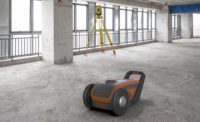New research from Interact Analysis, UK, shows huge potential growth in the importance of autonomous mobile robots (AMRs), specifically in order fulfillment applications.
The findings show that more than 100,000 AMRs, excluding Amazon, will have been deployed for order fulfilment by the end of 2020, and that more than 580,000 will be installed over the next five years.
Although fewer than 300 sites deployed order fulfilment AMRs at the end of last year, explosive growth is predicted due to the “perfect storm” of a number of key drivers. The report highlights the “Amazon Effect,” whereby e-commerce companies are being forced to increase speed and flexibility of operation in order to keep up.
Record low unemployment rates, coupled with the ongoing shift of younger generations away from manual labor, also created a major shortage of warehouse workers, thus increasing demand for automated systems.
“AMR vendors have emerged with a variety of different approaches and sub-approaches,” says Ash Sharma, research director. “The question over which technology or approach will ‘win’ is not an easy one to answer. All approaches are forecast for strong growth (albeit at different paces and timeframes), and the approach preferred will depend on a number of variables. While in every industry there are always winners and losers, right now it appears that the size of the untapped opportunity and the underlying drivers of demand are more than strong enough to support all the vendor types we see today, and as a result we expect very promising growth for the majority.”
About the mobile robot report
The mobile robot market is set for a major transformation over the next decade as AMRs become more adopted in warehouses and logistics centers. Technology continues to hit the mainstream thanks to an acute labor shortage and e-commerce boom coupled with increasing customer demands for faster and cheaper delivery and high return rates.
At the same time, automation and robotics continues to proliferate in manufacturing environments, amidst a backdrop of Industry 4.0 and consumer changes, leading to faster and shorter design cycles and a strong need for manufacturing flexibility.
The 2018 edition of this report was the first bottom-up analysis of the mobile robot market. In this 2019 edition, two experienced research directors spent 4-5 months researching and analyzing the industry, using primary research to build an updated assessment of the industry.


